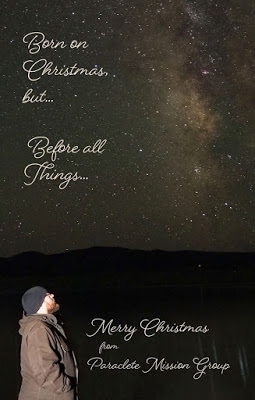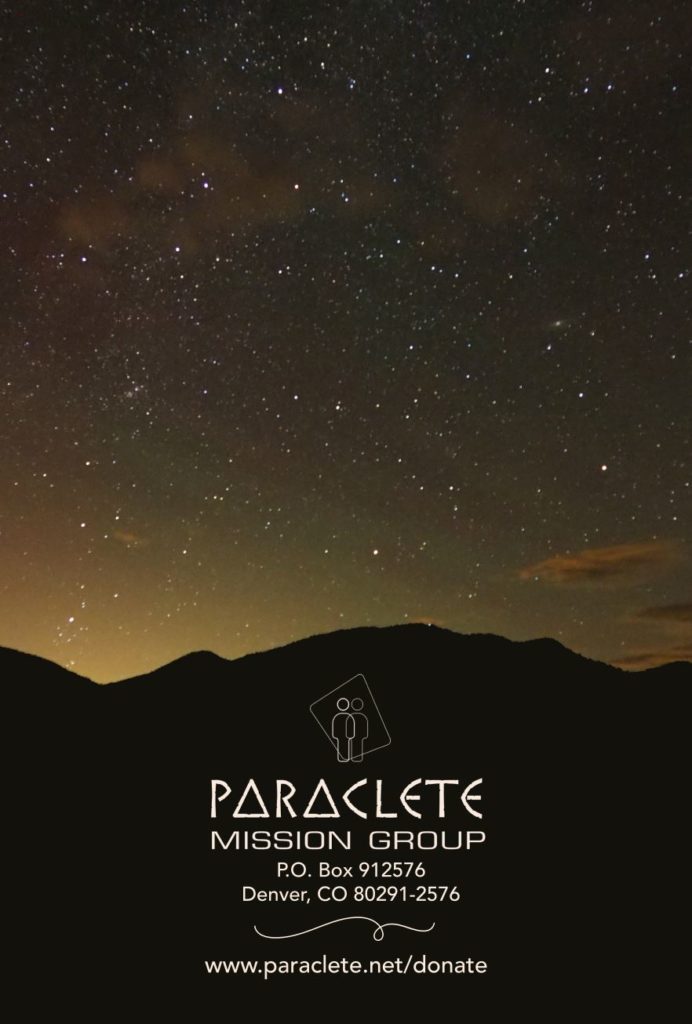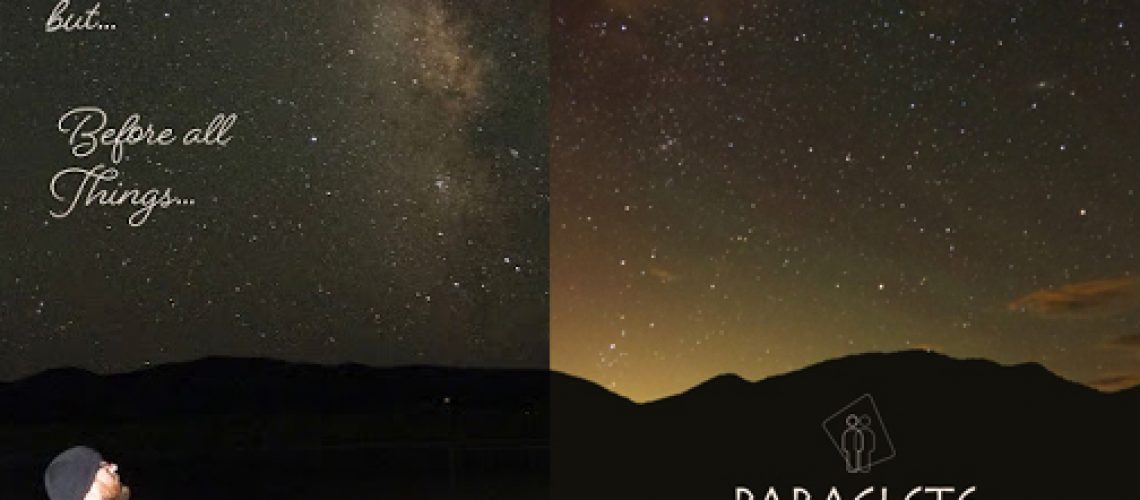
Maybe it’s a tad theological for the yule time taste of some, but in this year’s Paraclete Christmas card I wanted to point beyond the manger. Not to make light of the importance of Jesus’ coming into the world as a baby human being. That is a wondrous mystery. But I wanted to show the Christmas miracle in an even older historical context. My mind went further back, to the time when “all things were created through him and for him.” If we think of Jesus as the one who started it all, and the one who holds it all together, his claims are not just a matter of piety. They speak to the nature of reality.
The Theme
From whence springeth this inclination to theologize via Christmas card? Hard to say. So many people speak into our lives. So many verses penetrate our hearts. So many experiences put us in contact with reality. For sure, a significant influence was Dr. Paul Tyson, who gave the 2018 Areopagus Lecture, sponsored by Mars Hill Audio. The title of his lecture was “Escaping the Silver Chair: Renewed Minds and Our Vision of Reality. C.S. Lewis fans will catch the allusion. Or maybe not. I read the Narnia series every ten years or so, but I needed a reminder that The Silver Chair is the title of one of the books!
In the story, Prince Rilian is tied to a silver chair during the few minutes each day when he is in his right mind and aware of his bondage, caused by an evil enchantress. His “enchantment of disenchantment” is a spell that causes him to stop believing what is real, and even forget who he is. In doing battle with the hearts and wills of Rilian and his rescuers, the enchantress seeks to subtlety persuade them that there is no beautiful world beyond walls of her chambers. There is no sky, no sun, no Aslan. In the end, the enchantress is revealed for the evil serpent that she is, and Rilian is freed from her illusions of disillusionment.
Dr. Tyson uses Lewis’ story as metaphor of our modern predicament, living in a culture that assumes only facts, numbers and physical traits are real. In reality, some invisible persons are real, God walked the earth as a man, and the science of physics has a non-physical origin! We all, Dr. Tyson says, need to throw off the modern enchantment of disenchantment and realize that we live in a richly enchanted world, full of mystery, wonder and divine majesty. He claims that our Christian obligation to repent, goes far beyond feelings of regret and resolutions to do better. Rather, repentance, metanoia in Greek, is a radical re-envisioning of what is really real.
You can listen to the entire lecture yourself on the Mars Hill Audio website, where they are offering it as a free feature at https://marshillaudio.org/areopagus. It’s about an hour long, after a short introduction by Ken Myers. Dr. Paul Tyson is a Research Fellow at the Institute for Advanced Studies in the Humanities (IASH) at the University of Queensland, Australia.
After the lecture, which was in late October this year, I started thinking about how I am enchanted with disenchantment–how I assume the modern myth that faith is only a matter of personal devotion, disconnected from the real world. And from there I began to wonder if we could celebrate the deep reality of the incarnation this Christmas. And my mind went to the photo featured in the 2018 Christmas card.
The Shot

It was a few days after the new moon in July of 2016. I was invited by our son and daughter-in-law, Carl and Jamie Volkhardt, to go on a midnight jaunt into the mountains. They wanted to try out a telescope, and a friend of theirs, Collin Gilbert, was going to do some night sky photography. We drove up into the mountains west of Colorado Springs, far enough to get beyond the lights of the city for some truly dark skies. It was cold for July in the Colorado high country. We actually weren’t that high by Colorado standards–about 8,600 feet at 11 Mile Reservoir.
Carl and I tried combining disciplines, connecting my camera and his telescope. That didn’t go so well. I had never tried to shoot the Milky Way, but it was calling to us that night, clearly visible (as a “milky” blur) to the naked eye. I should have worked on learning camera controls for long exposures before leaving home. Oh, well. I worked for most of the evening experimenting with different settings I could have Googled.
As everyone was getting ready for a warm ride home I was finally starting to get some photos worth keeping. For a last shot, I asked Carl to stand still in the foreground and look up at the sky. I’d seen pictures with the foreground illuminated with flash and the sky taken in with a long exposure. On the first attempt I got a staring ghost– a white silhouette looking at the Milky Way! Turn down the flash. Still too much. Turn it down as low as it will go. Still too much. How do people do this? Back up with the flash… better. Back up more… better still. At about 30 feet behind the camera, 60 feet from Carl, I got the shot in the card. It was the last photo of the evening. Time to head home.

Geek Out
Camera: Olympus E-M10
Tripod: Leitz Tiltal 4602
Lens: Zuiko 14-35 Zoom
Aperture: f 3.5
Focal Length: 14mm
Exposure: 25 seconds
ISO: 4,000
Flash: Olympus T-32, low power at about 60′
The shot on the back of the card is from the same night, but looking in the opposite direction, east, back toward Colorado Springs. The color in the sky is from the city lights.

